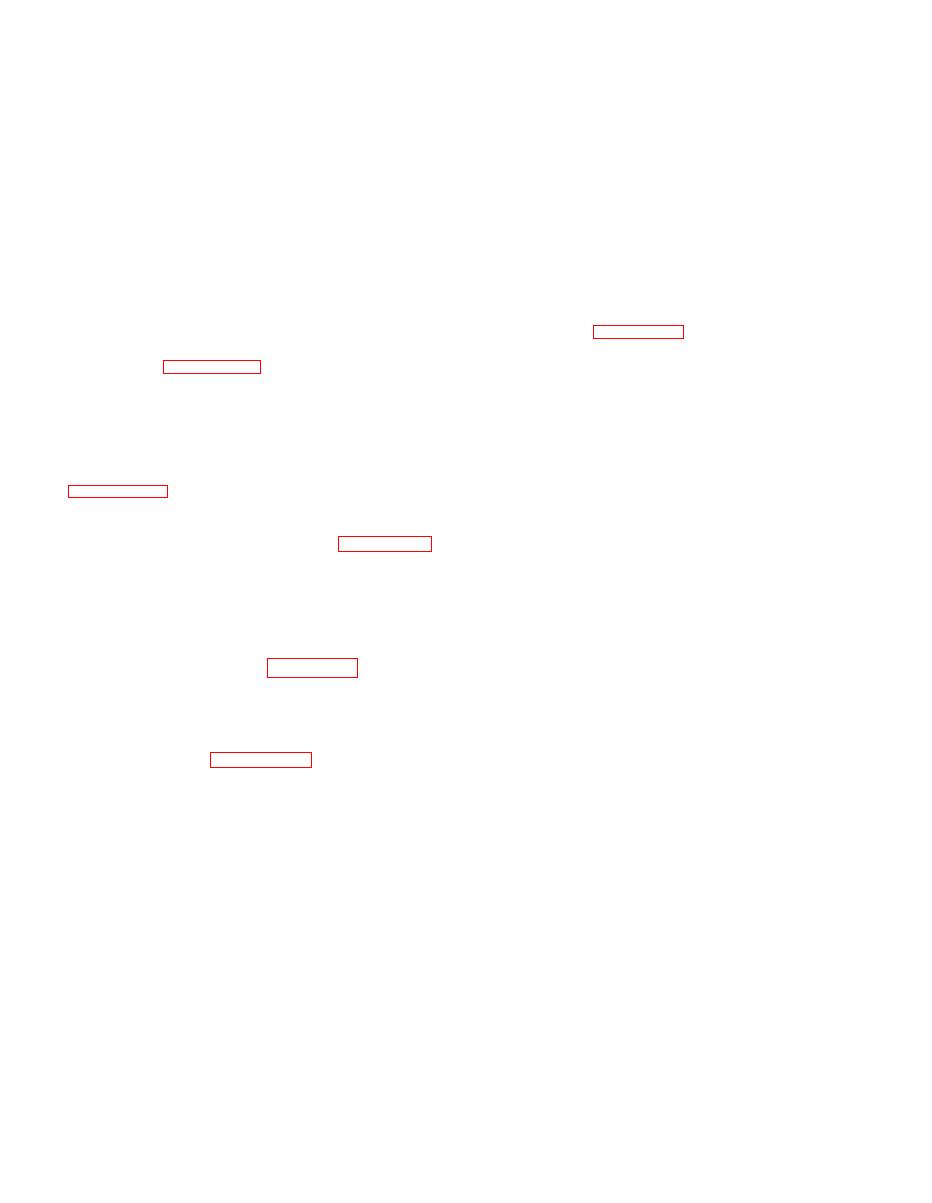 |
|||
|
|
|||
|
|
|||
| ||||||||||
|
|
 LEGEND FOR FIGURE 5-146
Sheave c a r r i e r r o d
19.
Back-up r i n g
28.
10.
Inter rod
1.
L i f t c y l i n d e r assembly
20.
29.
Retainer
Inner
rail
rod
11.
Bleeder
2.
Barrel-
21.
Retainer
30.
Wiper
12.
Adaptor
3.
Packing kit
31.
Packing
13.
Retainer
Wiper
22.
4.
Seal
23.
Packing
32.
Adaptor
Feed tube
14.
Seal
5.
Packing
33.
Cap
Adaptor
6.
15. Packing
24.
25.
Setscrew
34.
Pellet
7.
Gland
16. Retainer
35.
Bearing
26.
Pellet
Wiper
1 7 . Wiper
8.
36.
Bearing
27.
Bearing
18. Bearing
9.
Wear ring
37.
Bearing
d. Remove pipe elbow, vent line and O-ring from
1 . After end cap is removed, remove the flow
piston rod.
tube as shown in figure 5-152.
e. Refer to figure 5-147 and remove gland nuts
m. Plow tube guide bushing may be removed,
using a piece of drill rod as previously described
using a spanner wrench. Place a container beneath
cylinder end to catch oil spillage.
and a special bushing removal wrench.
f. Remove ail "V" packings from the ends of the
n. Remove primary piston from barrel as shown
primary, stationary and secondary pistons, as each
in figure 5-153. Remove any packings that did not
p i s t o n is extended from its barrel, as shown in
come out with pistons.
5-150. CLEANING AND INSPECTION.
g. If packings do not come out with pistons, they
may be removed by hand as shown in figure 5-149,
a. Clean all parts of the disassembled cylinder
after pistons are removed.
with solvent (Stoddard solvent, or similar mineral
spirits), and dry thoroughly.
h . Unscrew the stationary piston cap from the
barrel (using a spanner wrench inserted in the two
b. Check each cylinder wall and bore for cracks,
holes in the cap face) and pull out the stationary
pitting or scoring.
Such irregularities will
p i s t o n assembly far enough to remove the two
necessitate replacement of the affected part.
allen head screws shown in figure 5-150.
c . Small nicks and burrs on external cylinder
i. Remove stationary piston cap from stationary
surfacss may be removed by use of a fine india
piston by pulling stationary piston out far enough
stone or hone, provided that removal of such
to insert a piece of drill rod through the cylinder
defect does not leave a permanent notch or groove
b o d y as shown in figure 5-151, and applying a
in the cylinder wall which might lead to packing
spanner wrench to the end cap to unscrew it. The
damage and subsequent leakage.
drill rod will prevent the stationary piston from
turning.
d. All packings and seals should be replaced each
time the cylinder is disassembled.
j . Remove the secondary piston assembly from
t h e stationary piston, and place the secondary
5 - . 1 5 1 . REASSEMBLY.
piston assembly on the bench, supported by
notched-out 2 x 4's.
a. Dip all packings and rings in clean oil prior to
reassembly.
k. Remove the end cap from the secondary
piston using a spanner wrench and piece of drill
b. Place "V" ring packings together in sets of the
rod in the same manner as removal of the
various diameters required. Arrange each set in the
stationary piston end cap.
following manner. Start with the brass ring, then
5-104
|
|
Privacy Statement - Press Release - Copyright Information. - Contact Us |